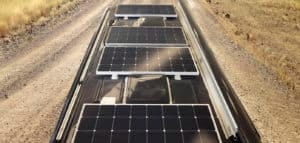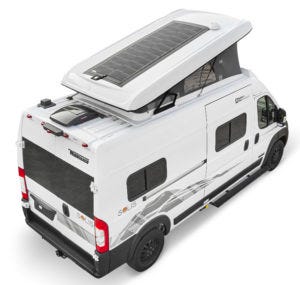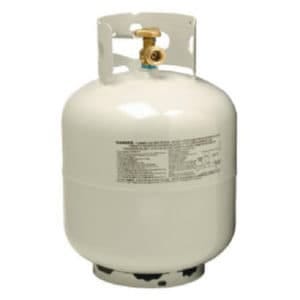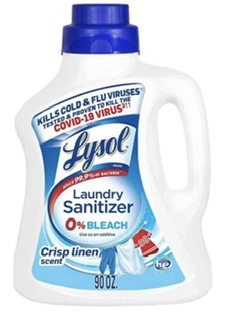Dear Readers,
What would you do if you were forced to evacuate your bricks-and-sticks home ahead of a hurricane, wildfire, flood or other natural disaster?
From watching interviews at disaster areas last year, it appears that some people choose to ride out the storm, flood or fire simply because they had no place to go, and they didn’t want to take a chance on living in an auditorium on a cot for weeks on end.
These natural disaster scenarios has been replayed in Texas, California, Washington and numerous other states recently. So what about using your RV as an escape pod from these disaster? Would it work?
It’s not just a “recreational” vehicle, it’s an “escape” pod!
I learned a lot at the Hershey RV Show last year that I think is applicable to keeping yourself and your family safe in natural (and possibly even man-made) disasters.
With the proper additions of enough solar and battery power to your RV, along with a few extras such as a portable generator or CarGenerator, you and your family can boondock off the grid in your escape pod for weeks. That is typically long enough to avoid the immediate dangers of hurricanes, fires and floods.
That’s why I think of a properly equipped RV as an escape pod, just like you see on any sci-fi spaceship. So when FEMA or your local First Responders tell you to evacuate, you can put the kids and the pets in the truck or motorhome, then drive a few hundred miles away out of the storm to wait it out. But you need to prepare in advance in order to make this work.
RV battery and solar power
One of the trends I saw at the Hershey Show was the addition of a lot of battery power and solar panels. While just a few years ago the state of the art was a single 100 Ah FLA (Flooded Lead Acid) or maybe an AGM (no-maintenance Absorbent Glass Matt) battery, lithium batteries are now everywhere.
For example, my Rockwood GeoPro toyhauler has an ABC Outfitters upgrade with a 400 amp-hr (5,000 watt-hr) Mastervolt battery along with a 3,000-watt hybrid inverter that can seamlessly mix AC shore power with battery storage, allowing you to moochdock on something as little as 5 or 10 amps of 120-volt shore power.
Plus, last year I road-tested a Ford F-150 PowerBoost Hybrid pickup truck with the built-in 7,200-watt inverter generator that is rated to run for up to 83 hours on idle.
I didn’t have time to test it fully during my 2-week loaner time, but I’m pretty sure the F-150 PowerBoost could keep one or two RVs with 30-amp shore power running for more than a week on a single tank of gas, and still have enough left in the tank to find a gas station. It’s the perfect escape pod tow.
Here comes the sun!
My Geo Pro trailer also has 570 watts of solar panels on the roof. They can provide up to 2,300 watt-hrs of energy per day, which can completely recharge that 400 Ah battery in 2 days from 0% to 100% State of Charge (SOC).
While you can indeed run the air conditioner for up to 5 hours at night from this battery power alone, you’ll have a depleted battery in the morning. But this does mean that if you don’t run the air conditioner all night long, you can still operate all your normal RV appliances, such as the 12-volt DC refrigerator, CPAP machine, and propane furnace fan, for as long as the sun keeps shining.
Some of the other Class B motorhomes I saw offered by Thor and Winnebago included up to a pair of 560 amp-hr. lithium batteries with a second high-amperage alternator on the engine that can recharge them in a few hours of idle time or while driving.
That’s 1,120 amp-hrs. of battery storage at 12.5 volts, which is equal to 11 (eleven!) 100 amp-hr batteries. They say it will power the air conditioner for up to 12 hours on battery power alone. The secondary alternator plus the 400 watts of solar panels can recharge the battery in a few hours.
Stay safe with generators
Honda-EU3200i-Generator at campsite
I’m already seeing warnings from FEMA about homeowners in the affected areas on the dangers of running portable generators too close to and even inside of their houses. So you should all know to keep any portable generator at least 20 feet away from a window or door, and NEVER operate one inside of an attached garage or building. I’m afraid there might be some additional carbon monoxide deaths as a result of these disasters which should be completely unavoidable.
What about extra power from a CarGenerator?
And here is where alternative generators such as the CarGenerator and Jackery Solar Generatorscan help out. While I don’t think you want to use up all the gasoline supply of your tow vehicle to power the CarGenerator, the 1,000-watt version should be able to provide up to 80 amps of charging power to your RV lithium batteries. So, in just a few hours of engine idle time it can augment your solar power on a cloudy day to help recharge your RV house batteries.
Solar generators
And if you have a solar generator like the Jackery Explorer plus a few solar panels, it can provide indefinite power for phone charging, CPAP machines, electric blankets and even a 12-volt DC cooler for additional food storage.
It’s amazing all the things you can power for hours with one of these Portable Power Stations. And with the additions of a few solar panels you can do it again the next day, and the next, for weeks on end.
Keep your propane tanks full
Propane never goes bad, so don’t wait until the day you need to evacuate from a storm to fill up your tanks. Fill them up now and check them occasionally to make sure there’s no leakage. Pound-for-pound, propane packs a lot more energy than any lithium battery, which is why it’s great for things like a gas stove and furnace. But if you let your tanks run dry, then you’re SOL—as we like to say in the pro-sound business.
GMRS Walkie-Talkies
While cell phones are great as long as the cell towers are up and running, in situations such as a massive hurricane you can expect cell phones to be inoperable for days or even weeks. So GMRS (General Mobile Radio Service) Walkie-Talkies are a great way to keep your little survival group in contact with each other, as well as contact first responders in the area in case you need help.
I don’t have a specific brand to recommend except to note that they should have rechargeable batteries that can keep them operating without going to the store for fresh batteries. Here are some to look at on Amazon.
Cleaning supplies
My wife acts like she’s cleaning lab equipment even for a simple task like doing the dishes. So I asked her what she would use if we had to camp for a few weeks without access to a real washer and dryer. She recommends Lysol Laundry Sanitizer and a 5-gallon bucket with a lid for shaking it up. And don’t forget a clothesline and clothespins to dry your clothes on the line.
Don’t forget pet supplies
And since you’ll be bringing your pets with you in your escape pod, make sure you have plenty of dog/cat food along with whatever medical supplies you might need for them. For example, one of our cats needed insulin twice a day for 18 months before he passed away, which keep him healthy and active. I can’t imagine watching him suffer without insulin, so bring whatever your furbaby needs for the long haul.
Bring your own medical supplies…
Finally, and perhaps most importantly, make sure you pack plenty of whatever pills and prescriptions you need for you and your family. How about a spare inhaler (if someone in your family has asthma), Insulin and hypodermic needles (for diabetics) and over-the counter cough medicines, Tylenol and Ibuprofen. You probably won’t be able to find these for weeks or longer in an area affected by a hurricane like Ian, so plan ahead.
You may have to rely on your own medical supplies for a month or more, so be generous with your packing. I normally get my own prescriptions in a 90-day supply, so I think that’s a good amount to shoot for. Take everything you think you might need, then pack some more. You won’t be sorry that you brought extra.
Don’t forget the TP
Make sure you bring along plenty of toilet paper, toothpaste and any other personal supplies you might need. Anything you can do to be more comfortable is a good idea. And I’ve not even touched on food supplies to bring along, but that would make for a great future discussion. In short, the more you prepare for yourself, the less of a burden you and your family will be in the event of a natural disaster. And you might even to help a few other families who didn’t prepare as well as you did.
Let’s play safe out there…. Mike





















We have thought about roof mounted solar panels. However, Renogy does not reccomend this due to hail storms in Arizona. What do you think?
Wow! It's Y2K all over again, with more advanced equipment. I still have a solar-powered flashlight from that. Thanks for this information. Since disasters are becoming the norm, I will be incorporating it into my upcoming RV.